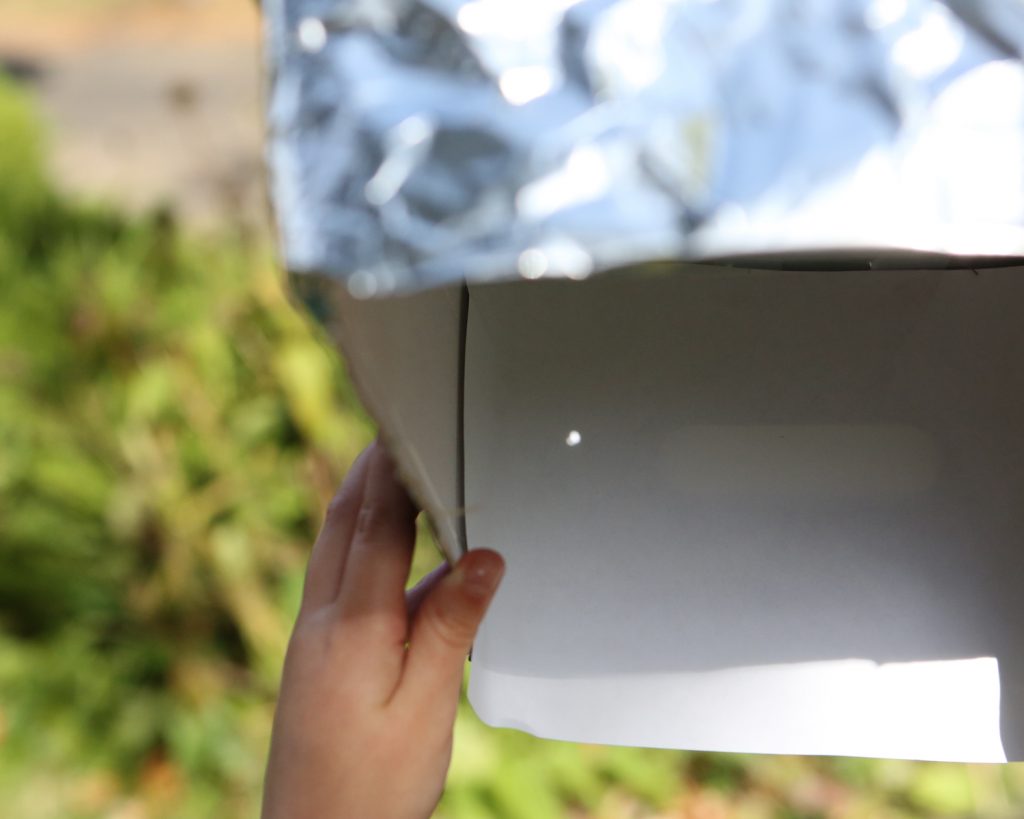Tag: 2017 Solar Eclipse’
Six Cool Facts about the 2017 Total Solar Eclipse
- by KitchenPantryScientist
In less than two weeks, the kids and I will hit the road to venture into the path of totality of the August 21st total solar eclipse. We’re hoping for clear skies in St. Joseph, MO, so that we can stand under the moon-darkened sky and catch a glimpse of the Sun’s corona.

Pinhole Solar Viewer- Kitchen Science Lab for Kids (Quarry Books)
NASA’s website is one of my favorite science resources, and they have tons of great information on the upcoming total solar eclipse. Check it out to learn when and where you can watch the eclipse, and how much of the Sun will be covered up in your back yard.
To safely watch the eclipse without damaging your eyes, you’ll need National Science Foundation-approved solar viewing glasses. If you don’t have glasses, you can easily view it indirectly by making a pinhole viewer. Here’s a link to an article I wrote for Scholastic Parents on how to build a solar viewer using a shoe box and some aluminum foil.
The Exploratorium in San Francisco has a fantastic Total Solar Eclipse 2017 app that you can download for more resources and to watch the eclipse live.
Here are some of the coolest things I learned about total solar eclipses from NASA’s website:
1: During a total eclipse, it’s possible to see bright stars and planets, even in the middle of the day. (I knew it would get dark, but that’s amazing!)
2. The Sun is 400 times wider than the Moon, but it’s 400 times farther away, so they appear to be the same size if you’re looking at them from Earth. That’s why the Moon can completely cover the sun. Scientists describe this by saying that they have the same angular size.
3. If you’re in the path of the total eclipse and place a large sheet of white paper on the ground, you may see dancing “shadow bands” moments before and after the eclipse, which are created by tiny slivers of sunlight passing through the currents of Earth’s atmosphere.
4. The temperature in areas of the Moon’s shadow will briefly drop as the Sun’s light is blocked.
5. The only popular song that refers directly to an actual solar eclipse is Carly Simon’s song “You’re so Vain.” (1970 total solar eclipse in Nova Scotia) (Around 3:05 in the song.)
6. Just before a total solar eclipse, you can see flashes of light called “Bailey’s Beads”around the edges of the dark circle of the Moon. They’re caused by sunlight flashing through canyons on the Moon’s surface.
Will you be watching? The next total solar eclipse won’t traverse the continental United States until April, 2024.